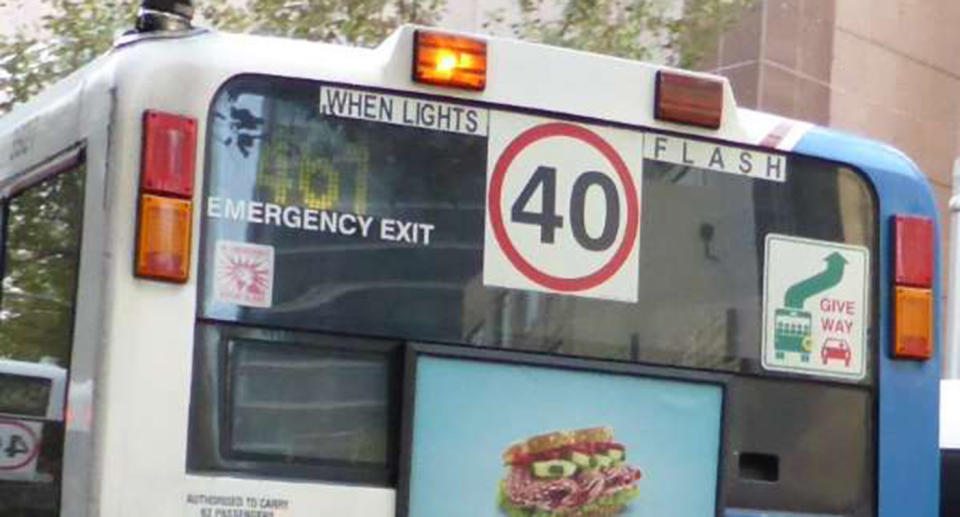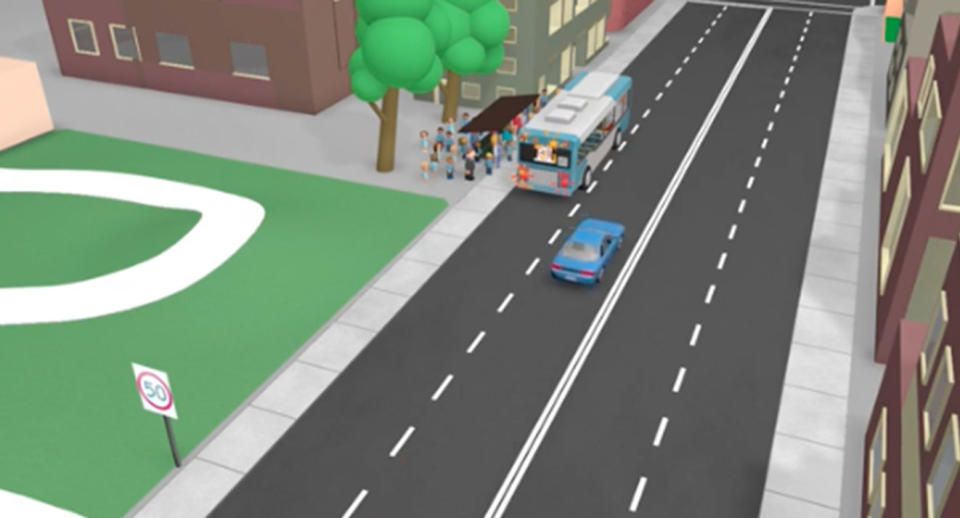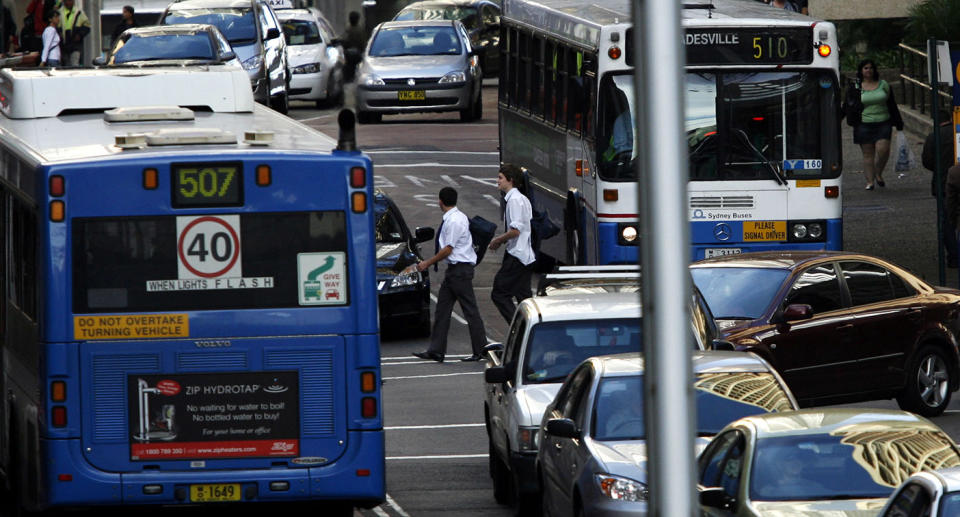Why drivers are getting fined for overtaking buses
Drivers could be unintentionally breaking the law by not reducing their speed around buses with flashing lights.
By law, a NSW motorist must not overtake or pass a bus with flashing lights at more than 40km/h, as it is an important safety warning that children are being picked up and dropped off.
Lights begin to flash when the bus stops and the doors open, and they keep flashing for about 30 seconds after the doors close. That is the signal for all motorists travelling in the same direction to slow down, regardless of which lane they are in.

Observing the 40km/h speed limit gives drivers more chance to stop if they need to.
Children are most at risk in the moments after they step off the bus, so NSW Transport urges motorists to look out for youngsters who are crossing the road, or waiting to cross.
“Young children are often unpredictable in their movements. They are still developing the skills that help them to judge the direction of sound and the speed and distance of vehicles,” NSW Transport said.
Motorists can help reduce the risk of a crash and keep children safe by slowing down to 40km/h when bus lights are flashing; looking out for children crossing the road near bus stops, in school zones or along bus routes; and giving way to buses when they merge back into traffic.

“Under the NSW Road Rules, when a bus with a ‘40 when lights flash speed limit’ sign activates the orange flashing ‘wig wag’ lights, drivers must not exceed 40km/h when overtaking or passing the bus,” a NSW Transport spokesperson told Yahoo7.
“This rule applies whenever drivers see the lights flashing, regardless of whether they can see children or adults leaving the bus.”
The bus driver will activate the warning system when the bus is stopping to drop off or pick up children on the way to or from school. This applies between 7-9.30am and 2.30-5.00pm on a weekday, or if the bus is being used solely for the purpose of taking children to or from school.
“The rule applies to drivers when passing or overtaking a bus with the ‘wig wags’ activated. On a multi-lane road, all vehicles approaching from the rear of the bus in adjacent lanes must comply with the rule,” NSW Transport said.
School buses
School buses also have flashing headlights as well as tail lights, to warn other motorists to slow down.

NSW Transport advises motorists to be prepared to stop when they see either the flashing headlights or tail lights on a bus.
The lower speed limit is necessary because it takes less time for a motorist to stop from 40k/h than at 60km/h.
If a child runs out in front of a vehicle and is hit, there’s less risk of them suffering a fatal injury at the lower speed, according to NSW Transport’s Roads and Maritime Services.
Penalties for not slowing down
Motorists travelling in the same direction as the bus risk being fined if they do not slow down while the lights are flashing.
Like other speeding offences, penalties differ depending on the licence class of the driver, the class of vehicle they are driving and the number of kilometres the speed limit is exceeded by.
As an example, if an unrestricted licence holder driving a car exceeds the 40km/h speed limit by 10km/h or under, the penalty is a $119 fine and one demerit point.

In rural areas, motorists are reminded to take extra care when driving past bus stops or along bus routes.
“Be aware of children crossing the road and slow down to 40km/h when bus lights flash. A stationary bus can impede your view of children near the bus,” Transport NSW cautioned.


